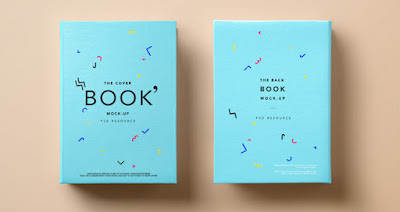A Comprehensive Guide to Hiring Book Design Services in the USA
The Importance of Book Design in Captivating Readers
In the highly competitive world of publishing, where countless books are vying for readers' attention, the visual appeal of a book can make or break its success. Book design is a crucial element that plays a significant role in attracting readers and setting a book apart from the rest. A well-designed book cover and interior layout can make a lasting impression on readers, drawing them in and enhancing their overall reading experience. The cover design, typography, use of color, and the layout of the pages all contribute to the book's broad aesthetic appeal and can influence a reader's decision to pick it up and read it. A thoughtful and well-executed book design can also help to convey the book's genre, tone, and subject matter, making it easier for readers to connect with and understand the story. Ultimately, book design is an essential aspect of the publishing process that should not be overlooked, as it can significantly impact a book's success and readers' enjoyment.
Understanding the Role of a Professional Book Designer
A skilled book designer is not just an artist but a strategic contributor to a book's success. This heading explores the critical responsibilities of a book designer, emphasizing the need for expertise in layout, typography, and visual storytelling. Readers will gain insights into what to look for when hiring a book designer for their projects.
Navigating the Sea of Book Cover Designers in the USA
As the demand for high-quality book design services continues to increase, the United States of America offers a plethora of talented designers and companies that can cater to the specific needs of authors and publishers alike. It is essential to conduct thorough research and evaluate the designer's portfolio. This can involve scrutinizing past work, examining the designer's style and strengths, and reviewing client feedback. Additionally, effective communication plays an integral role in the selection process. Clear and open communication between the designer and the client can help ensure that the final product meets the client's expectations and vision. Therefore, it is vital to choose a designer who is responsive and attentive to your needs. By taking these factors into account, authors and publishers can increase their chances of finding the right designer who can bring their book to life and make it stand out in a crowded market.
Trends and Innovations in Book Design
The world of book design is constantly evolving and adapting to the changing publishing landscape. With advancements in technology and a growing demand for interactive and visually appealing content, book designers are constantly exploring new ways to make their designs stand out. From innovative typography to interactive covers, this heading delves into the latest trends that are shaping the world of book design. By staying up-to-date with design innovations, readers can gain a competitive edge in the market and make their books more attractive to readers. Whether you're a self-published author or working with a traditional publishing house, understanding the latest trends in book design can help you create a visually stunning and engaging book that resonates with your target audience.
Book Design Services Won't Break the Bank
While quality book design is essential, budget constraints are a reality for many authors. This section provides practical tips on balancing the need for professional design with budget considerations. From negotiating prices to exploring affordable yet skilled designers, authors will find valuable advice on making the most of their investment.
In the dynamic orchestra of publishing, the journey from manuscript to masterpiece involves a critical phase: book design. In our first exploration, we delve into the profound impact that a well-crafted book design can have on captivating readers. From arresting covers that demand attention to thoughtfully laid-out interiors that enhance readability, the visual elements of a book are integral to its success in a crowded market.
Moving on, we unravel the layers of the book designer's role, emphasizing that they are not merely artists but strategic contributors. A proficient book designer possesses a keen understanding of layout, typography, and visual storytelling, shaping the reader's experience from the moment they lay eyes on the cover to the final page.
As we navigate the vast landscape of book cover designers in the USA, it becomes evident that finding the right professional for the job is a critical task. Readers are guided through a comprehensive process of researching potential designers, evaluating portfolios, and recognizing the importance of effective communication in collaboration.
The journey doesn't end with finding a designer; it extends into the realm of trends and innovations. In our fourth section, we shed light on the latest trends shaping book design, from augmented reality covers to experimental typography. Staying abreast of these innovations is vital for authors aiming to make their mark in the ever-evolving world of publishing.
However, practical considerations are also paramount. In our final segment, we address the budgetary concerns that often accompany the quest for quality book design. Authors are provided with actionable tips on negotiating prices, exploring cost-effective options, and making informed decisions that align with both their creative vision and financial constraints.
As you come to the end of this comprehensive guide, it's essential to recognize the value it offers to authors who are navigating the complex world of book design. By reflecting on the insights provided within this guide, authors can gain a deeper understanding of the significance of design and its impact on the overall success of their book. This guide has provided an in-depth analysis of the qualities to look for in a book designer, including their experience, skill set, and creative vision. Additionally, you have learned about the various strategies and resources available to help you find the right professional for your project.
Furthermore, this guide has highlighted the importance of staying up-to-date with industry trends and best practices. By keeping abreast of emerging design trends, authors can ensure that their books remain relevant and appealing to their target audience. The guide also offers practical budgeting tips to help authors navigate the financial aspects of their publishing journey.
Overall, this guide serves as an invaluable roadmap for any author who is serious about creating a standout book that will resonate with readers. Armed with the insights provided here, authors can embark on their publishing journey with confidence, knowing they have the knowledge and tools necessary to succeed.


Comments
Post a Comment